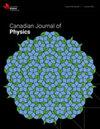Spectra of phosphorus ions for astrophysical modeling: P~I - P~XV
IF 1.1
4区 物理与天体物理
Q3 PHYSICS, MULTIDISCIPLINARY
引用次数: 0
Abstract
Phosphorus (P), a basic element of life, has been a least studied element due to its poor presence in astrophysical spectra. However, search for the P lines has increased considerably with discoveries of exoplanets and are being detected by high resolution and sophisticated astronomical observatories, e.g. James Webb Space Telescope (JWST). JWST may provide a clue for life with detection of P in its infrared (IR) region. Identification of the element and analysis of the observed spectra will require high accuracy data for atomic processes that produces lines and their predicted features. The present study focuses on these needs and reports systematically regions of wavelengths, from x-ray to IR, that show prominent lines by the 15 individual ionization stages of phosphorus, P I - P XV for the first time. We present large amount of relevant atomic data for energies, transition parameters, and lifetimes obtained in relativistic Breit-Pauli approximation using the R-matrix method and atomic structure program SUPERSTRUCTURE. Our spectral features for the fifteen ions, P I - P XV, predict strengths of lines in various wavelength regions. They show dominance of P~I and P~II in the infrared region and other ions in the ultraviolet and optical regions often stretching to IR in the continuum. For determination of accuracy, we have made extensive comparisons of our atomic data with available experimental and theoretical values. Based on these, our results and features are expected to provide precise plasma diagnostics and astrophysical modeling.用于天体物理建模的磷离子光谱:P~I - P~XV
磷(P)是生命的基本元素,但由于在天体物理光谱中很少出现,因此对它的研究一直很少。然而,随着系外行星的发现,对 P 线的搜索大大增加,高分辨率和复杂的天文观测台(如詹姆斯-韦伯太空望远镜(JWST))也正在对其进行探测。JWST 在其红外(IR)区域探测到的 P 可能会为生命提供线索。要识别这种元素并分析观测到的光谱,就需要获得关于产生谱线的原子过程及其预测特征的高精度数据。本研究针对这些需求,首次系统地报告了从 X 射线到红外的波长区域,这些区域显示了磷的 15 个电离阶段(P I - P XV)的突出谱线。我们利用 R 矩阵方法和原子结构程序 SUPERSTRUCTURE,在相对论布赖特-保利近似中获得了大量有关能量、转变参数和寿命的原子数据。我们对 15 个离子(P I - P XV)的光谱特征预测了不同波长区域的线强度。它们显示 P~I 和 P~II 在红外区域占主导地位,而其他离子则在紫外和光学区域占主导地位,并经常延伸到连续面的红外区域。为了确定准确性,我们将原子数据与现有的实验值和理论值进行了广泛的比较。在此基础上,我们的结果和特征有望提供精确的等离子体诊断和天体物理建模。
本文章由计算机程序翻译,如有差异,请以英文原文为准。
求助全文
约1分钟内获得全文
求助全文
来源期刊

Canadian Journal of Physics
物理-物理:综合
CiteScore
2.30
自引率
8.30%
发文量
65
审稿时长
1.7 months
期刊介绍:
The Canadian Journal of Physics publishes research articles, rapid communications, and review articles that report significant advances in research in physics, including atomic and molecular physics; condensed matter; elementary particles and fields; nuclear physics; gases, fluid dynamics, and plasmas; electromagnetism and optics; mathematical physics; interdisciplinary, classical, and applied physics; relativity and cosmology; physics education research; statistical mechanics and thermodynamics; quantum physics and quantum computing; gravitation and string theory; biophysics; aeronomy and space physics; and astrophysics.
文献相关原料
| 公司名称 | 产品信息 | 采购帮参考价格 |
|---|
 求助内容:
求助内容: 应助结果提醒方式:
应助结果提醒方式:


